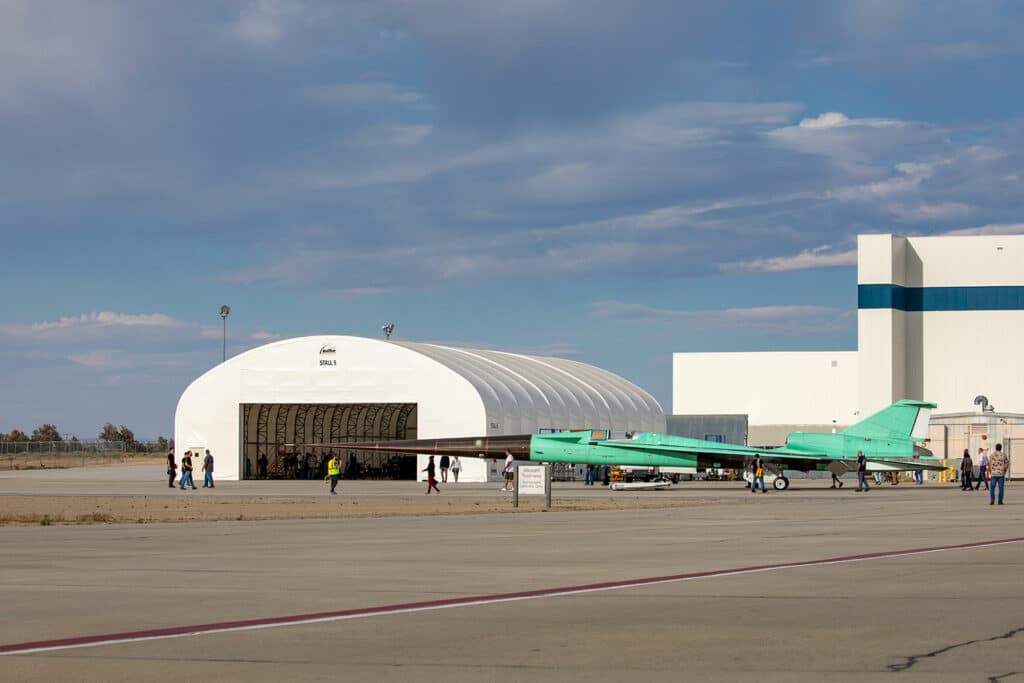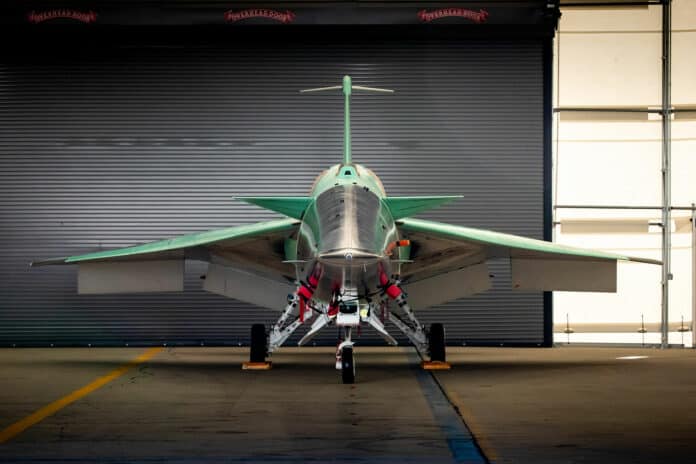NASA’s experimental X-59 Quiet SuperSonic Technology (QueSST) aircraft is almost ready for its first test flights later this year. Lockheed Martin’s latest photos show NASA’s X-59 as it sits on the flight line – the space between the hangar and the runway – at Lockheed Martin Skunk Works in Palmdale, California.
The move from its construction site to the flight line is one of many milestones that prepare the X-59 for its first and subsequent flights. Next up, the team will conduct significant ground tests to ensure the aircraft is safe to fly.
NASA’s X-59 research aircraft is designed to demonstrate the ability to fly supersonic, or faster than Mach 1. It is supposed to reduce the loud sonic boom to a quiet sonic thump, so it could pave the way for supersonic passenger flights over the continental U.S. that, up to now, have been banned due to regulations around noise pollution.

NASA will then fly the X-59 over several communities to gather data on human responses to the sound generated during supersonic flight. NASA will deliver that data set to U.S. and international regulators to possibly enable commercial supersonic flight over land.
The X-59 is designed to fly at 55,000 feet (16,800 meters) at a cruise speed of Mach 1.42 (940 mph/1,510 km/h) – nearly twice the speed of a standard passenger jet. Such high speeds will dramatically reduce flight times between destinations.
The X-59 will be used to collect community response data on the acceptability of a quiet sonic boom generated by the unique design of the aircraft.
